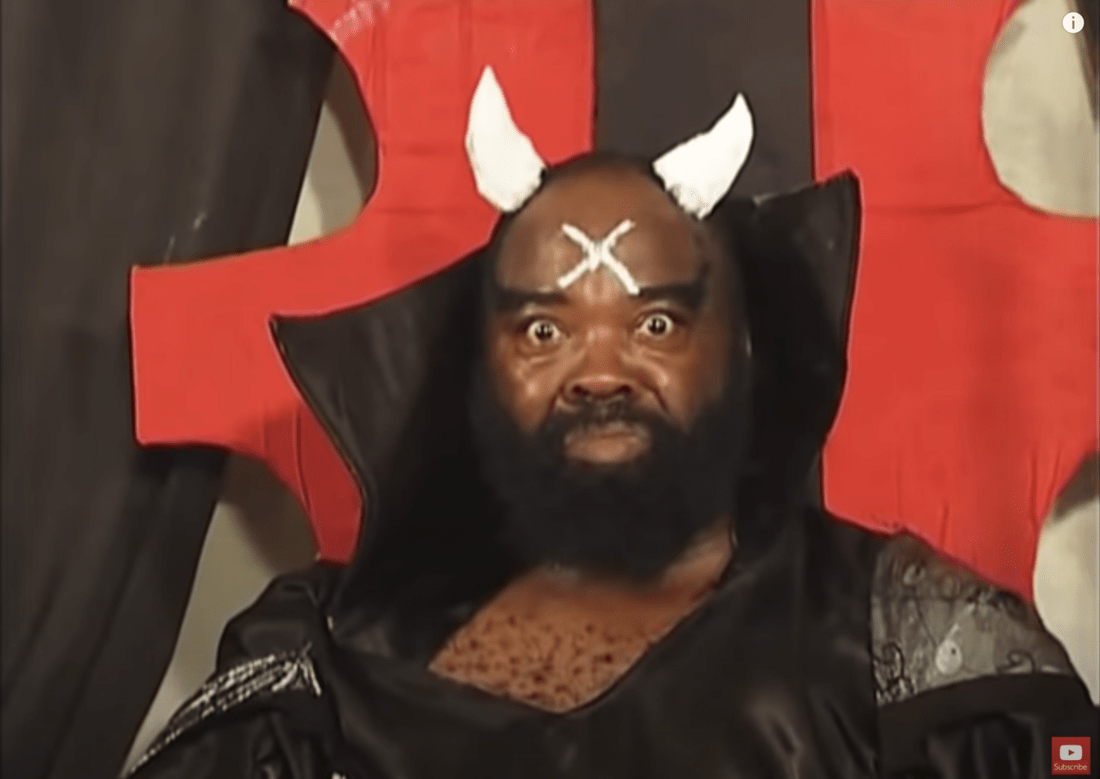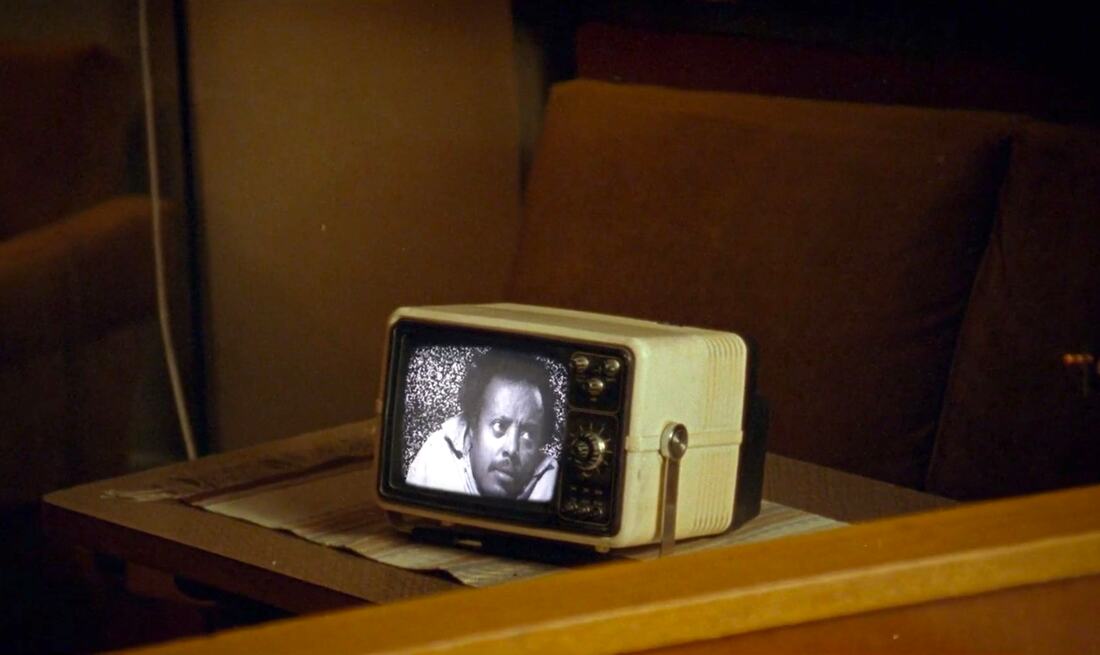
When I first heard the premise for The Act of Killing it sounded like a terrible idea and after seeing it I remain undecided. I am astonished that the movie was made at all. There has never been a movie anything like The Act of Killing. The situations it creates are unprecedented and so produce something uniquely profound but also uniquely horrifying.
The film’s director, Josh Oppenheimer, visited Indonesia in 2001 with the intention of making a documentary about the death squads that murdered 2 million people in Suharto’s 1965 coup. Oppenheimer was appalled that these men had never suffered any consequences for their crimes and enjoyed an elevated status as gangster heroes. They strolled the streets of Jakarta with complete impunity, puffed up with arrogant pride like a child playing at being a mafia don.
Oppenheimer decided to remedy this situation by giving these men a film crew and asking them to reenact their crimes in hopes of awakening in them some kind of insight or regret. It’s a very strange plan and it results in profoundly strange images.
Why engage with these men at all? Why give them further attention and another platform for exposure? Why indulge their narcissism? At the end of the film, we watch one of the men named Anwar retch and dry-heave as he realizes what he has done but it is not at all clear that indulging him and making a movie about him was worth his epiphany. There is no amount of suffering that Anwar or his cronies could endure that would change or heal what they have done. There is no sense of satisfaction or closure in Anwar’s awakening. Are we meant to be impressed? Are we to praise him for his penitence? It is estimated that Anwar personally killed more than 1000 people with his own hands, mostly through strangulation. Can this level of depravity ever be atoned for or forgiven?

The goal of the film is questionable but the means of achieving the goal are worse. The reenactments that these killers stage clearly traumatize the actors and participants. There is a terrifying tension on the sets as the gang members direct randomly chosen citizens to reenact what happened to the generation before them. The real events were like some unreal nightmare fueled by psychotic demons but reenacting these events in front of a camera and being ordered around by those demons is disorienting and deeply traumatizing. Not only are the actors traumatized, it is clear that the gang members or gangsters are feeding off the actor’s fear and pain. For the gangsters the reenactments are nostalgic.
It’s an uneasy and perhaps insane trade-off. You stir a dangerous and disgusting pot of pain and terror reawakening everything and in return you hope the display will teach the perpetrators a lesson. To be fair, getting these men to understand their crimes was not Oppenheimer’s only goal. He wanted to examine what happens to a society that allows its darkest chapter to go unresolved. The Indonesian people do not try to run from their past or hide it but neither do they try to come to terms with it.
The strangest part is the disintegration of reality that ensues as the movie unfolds. These men live in a fantasy where they are saviors of their country, true patriots, but it is not just their deluded visions that rattle reality. Their victims are on set too and they are also transported away from reality and enveloped in the trauma of the past. Traumatic memories are powerful time machines that can send a person straight back to the original experiences that caused the trauma. Once triggered, the memories erupt into the present unfaded by time as if they were still happening.
No one in the production seems to understand what is happening to them. The gangsters argue over what they are doing and why. They rationalize and philosophize and lose themselves in a fog of self-obsession. The actors follow directions and “act” like they are suffering and crying but are soon overwhelmed by real torrents of uncontrollable sobbing. The movie is meant to involve actors and directors reenacting true events but the reenacting is meant to be pretend. The grave nature of the events means that no one can truly separate the fiction of the present from the reality of the past. Add to this the fact that the reality of the past is being filtered and manipulated through deranged murders and reality, past or present, is hopelessly lost.

Oppenheimer has opened Pandora’s box hoping to understand its contents but the result is bizarre and catastrophic. Is it worth unleashing misery to see what it does? According to Pandora’s myth, after all the evils leave the box there is one thing left at the bottom, hope. It’s ironic, poetic, and maybe even applicable to the film but hoping for the best when dealing with mass murder is a scary endeavor. We step right into the sociopathic mind of the killers and watch as they bring their delusions to life. They sweep their actors, the audience, and everyone involved, into a murky mythical space that has never been seen before.
Current psychological models of how the emotional brain, or limbic system, works caution against the Freudian idea of catharsis. It is not that catharsis is not possible, it is only that re-triggering trauma can very easily change from a hopeful release into a re-experiencing of the suffering and a further entrenching of the damage. Again the same kind of trade-off presents itself. Can we, in a controlled way, open the trauma of the past in order to heal it? Is it dangerous? Is it worth it?
What we are watching on the screen becomes even more difficult to understand when we try to consider Oppenheimer’s motivations and the role he plays in making the film. Oppenheimer is not just watching along with us, he is shaping how we absorb the spectacle. He does not present us with the movies these men made, that was never the goal. In a way, Oppenheimer is pretending right along with these men. He is pretending to help them in hopes that with enough rope they will hang themselves, but again even if they do hang themselves metaphorically or literally what has been accomplished?
Errol Morris said of the film “To call it surreal I don’t think really does it justice. At its heart, it’s outrageous which is one of the things that makes it really, really, interesting.” Werner Herzog said, “I looked at it and I immediately knew I had never seen anything like that. I’d never seen anything as powerful as frightening and as surreal as what was on the screen.”These quotes are disturbing because they seem only concerned with what is on screen and not what went into making it. It’s not surprising that Herzog would think along these lines. He is a madman himself and yet it is his madness that has fueled an unrivaled filmography. It is his willingness to foster real suffering in order to create compelling images of suffering that is part of his questionable but immensely effective method.
What do we do with Oppenheimer’s film? How do we assess it? There is a scene where Safit Pardede, one of the gangsters, sits on a burning set and blithely revels in the memory of raping a child. He lets out a hardy laugh and says “Especially if you get one that is 14 years old. I’d say, it’s gonna be hell for you but heaven on earth for me.” What do you do with that? What if you were the cameraman? What goes through your mind? Do you just keep filming?

In another scene, Anwar and his toady Herman stand in front of a waterfall. Anwar is dressed in a robe like Saint Francis with his hands open to the masses, while Herman is dressed in a bright, blue ballgown and hat. Their victims line up, bloody and disheveled, and thank their murderers for murdering them and sending them to heaven. Once you allow Pandora’s box to be opened there is no telling what will come out.

Alex Woodson, writing for the Carnegie Council for Ethics in International Affairs wrote, “There has probably never been a film that bears even the slightest resemblance to The Act of Killing and it is highly improbable we will ever see anything like it again.“ Is this enough to justify its existence? That it provides a window into unseen territory? Perhaps it is but it is essential to consider who is doing the evaluating. It’s not just a matter of whose side you are on but how close you are to the reality of the events depicted. Not just whether you were there, but your ability to appreciate and understand the terrifying events that may be beyond understanding.
The film has been both vigorously protested and enthusiastically lauded. I personally am truly dumbfounded by it. I have seen it several times and I don’t know where to put it in my mind or where or whether it belongs in the world.

If you enjoyed this article click here for more
www.filmofileshideout.com/archives/the-ethical-problems-in-peter-brooks-tell-me-lies



